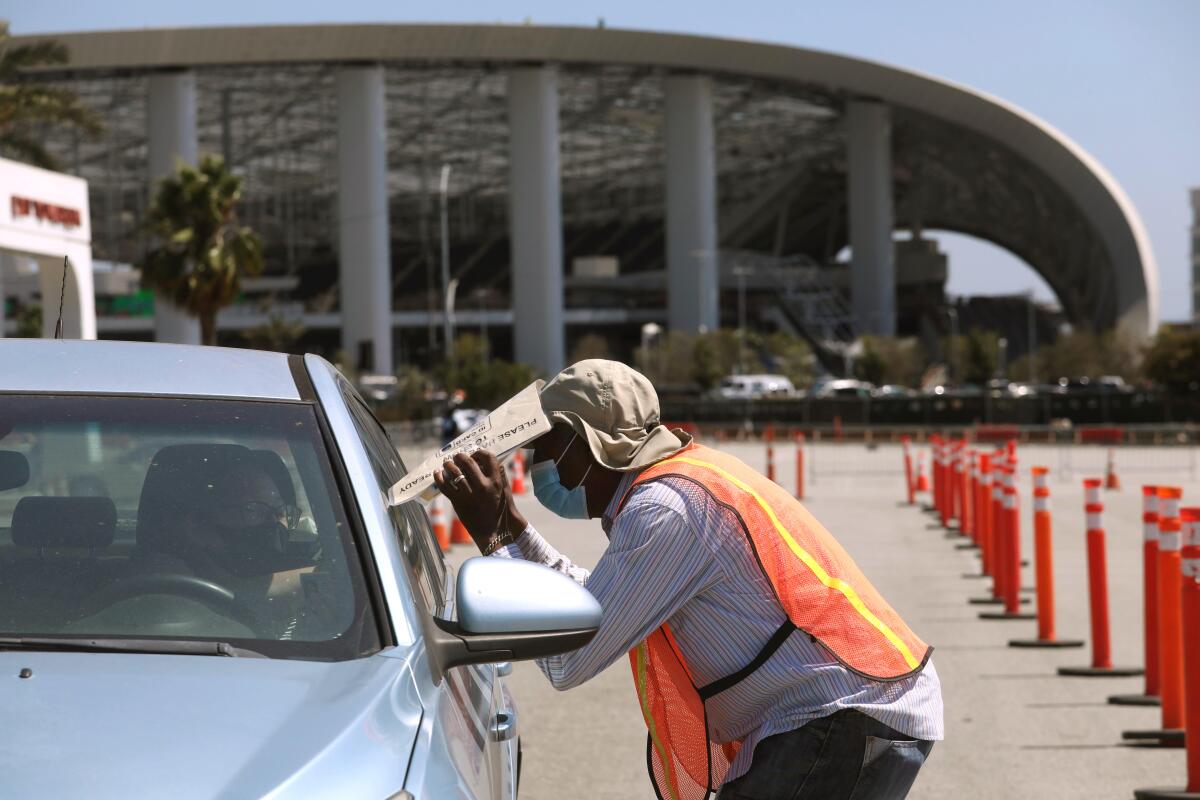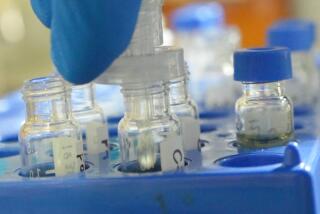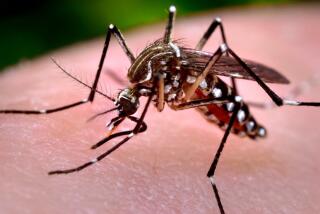California scales back coronavirus testing task force despite long lines, new outbreaks

In the early days of coronavirus testing, California public health officials teamed up with private industry executives for an immediate impact. The group, established by Gov. Gavin Newsom, added over 100 new test sites in three weeks, launched partnerships with new innovative labs, and managed the flow of swabs, chemicals and gear through the state’s sprawling new testing infrastructure.
But as the state now grapples with surging infection rates and looming test supply shortages, the task force has shrunk in size and influence. Dozens of task force members have departed and not been replaced, and the senior health official who oversaw the team has resigned.
The diminished state of the task force alarms some experts and former members who say a fully staffed team is needed more than ever to help a public health department that is chronically understaffed and ill-equipped to respond to emergencies on their own. California has long fallen short on providing adequate testing across the state, a reality that makes it impossible for public health officials to quickly track infectious cases and slow the spread.
The team was established to foster cooperation between the public and private sectors, which is crucial in responding to a pandemic that cuts across the entire healthcare system. The members, many of whom volunteered for three-month stints, came from top health organizations, and the state’s representatives included staff from the governor’s office and various agencies.
State health officials say the task force remains a significant contributor to the pandemic response. Dr. Gil Chavez, a new co-chair of the task force, spends “the majority of his workday” on its activities and it remains focused on improving and expanding testing capacity, according to a spokeswoman for the state public health department.
The team will “continue to ensure it has sufficient assistance from individuals from both inside and outside of state government to achieve its goals,” the spokeswoman said.
But the state’s continuing struggles with the pandemic response is worrisome evidence, say experts and former members, that the public sector alone can’t coordinate a response that involves distributing millions of swabs to test sites and synchronizing data with more than 50 laboratories, with supply chains extending across the globe.
California is still conducting less than half the daily tests necessary to stop the virus, according to an analysis by the Harvard Global Health Institute, and supplies are likely to dry up in the coming months as various states compete for them, said former task force who spoke on condition of anonymity.
“There is not one person waking up, thinking, ‘How are we going to do testing in September, in October, in November?’” said one former task force official.
“It’s a serious mistake,” said Lawrence Gostin, the director of the O’Neill Institute for National and Global Health Law at Georgetown University and the head of the World Health Organization’s Collaborating Center on National and Global Health Law. “California is far from out of the water. It’s probable that the worst is yet to come. You cannot skimp on testing strategy — full stop.”
When Chavez was asked at a press conference Monday whether the state’s testing capacity was enough to provide a test to anyone who wanted one, he said the state still needed to prioritize specific groups. “The answer is: Not today,” he said.
The task force, launched on April 4, was for months led by Dr. Charity Dean, a microbiology and infectious disease expert and then the assistant director of the state’s public health department, alongside co-chair Paul Markovich, the chief executive of Blue Shield of California.
Dean spent hours each day dealing with elected officials, including those on the White House’s task force, former colleagues said; Markovich juggled innovative strategy coordination with cumbersome tasks, like using a spreadsheet to track lab supply requests and manually phoning facilities in lieu of a universal electronic system. They were known to work up to 120 hours per week, talking by phone until close to midnight to troubleshoot testing infrastructure kinks and supply crises around the state.
An internal organizational chart shows that the two oversaw close to 70 staff members, with responsibilities ranging from drive-through site management to the procurement of highly sought-after testing supplies. The task force held meetings at 9 a.m. and 3 p.m. daily, inviting all members to join in.
Their goals were five-fold: increase lab capacity; improve the supply chain; enable new testing tools; improve data reporting; and build the testing workforce. In each category, the group showed improvement, according to progress documents reviewed by The Times. The task force surpassed 25,000 tests per day in late April and 60,000 tests per day by mid-May — reaching both milestones ahead of schedule.
But most of the partnership’s private industry representatives — including Markovich — signed up for a three-month volunteer term that ended on June 30. A detailed plan was in place to transition duties to state leadership beginning in late May — but for weeks, it remained nonoperational, since succeeding leaders had not yet been selected.
By July, Markovich had returned to his full-time post at Blue Shield, along with at least 10 other Blue Shield officials who made up the leadership for one-third of all task force branches. Other task force staffers returned to posts across the private sector, including a software engineering executive, a venture capitalist, a communications specialist, and a contact tracing liaison.
The state did not provide the total number of task force members, but several people with knowledge of the situation say it has decreased by more than 50%.
Most state employees who remain on the task force have distinct full-time roles unrelated to COVID-19, a person with direct knowledge of the task force said. Many are IT employees for the state, for example; at least two others are executive assistants in their twenties.
Two weeks after the departures — and six weeks after the transitions were set to begin — the state announced the co-chairs’ replacements: Dr. Bechara Choucair, the senior vice president and chief health officer for Kaiser Foundation Health Plan, Inc. and Hospitals; and Chavez, the state’s former epidemiologist, who had been retired until the pandemic hit.
Chavez is a noted advocate for immigrant rights and migrant health issues. And as the administration faces pushback — and a growing crisis of infection rates in front-line Latino workers — Chavez represents a trusted voice in a community that has often had its health needs overlooked.
Former task force leaders reported directly to Dr. Mark Ghaly, the state’s secretary of Health and Human Services, making for efficient planning and quick sign-offs for big supply purchases. The new leaders will now report to an official below him, the state confirmed.
A spokeswoman for Choucair declined to arrange a phone interview with The Times, referring inquiries back to state representatives.
Public officials say that with “critical infrastructure” now in place, the state is ready to take back the reins, and that private partners will continue to “consult with the state as needed.”
Rick Greenwood, who works with the task force to bolster county-level lab capacity, said the private industry players were “impressive” and “central” to the testing scale-up, but doesn’t worry about the future of the task force’s work.
“There’s a lot of qualified people in the state. It’s changed in character, but it’s still very active. I don’t know that anything has been lost,” he said.
Meanwhile, Newsom has relied on the private sector to supplement government work even before the pandemic, and when the two part ways, critics say, there’s typically a scramble to maintain continuity.
Public health infrastructure has been “underfunded federally for years” and “could barely handle outbreaks on a normal day, like TB or measles,” one former member said. It “was not designed to operationally respond with fast and nimble actions.”
And while companies like Roche have done widespread hiring to respond to the crisis, the state, facing budgetary restrictions, has not, they said.
Greenwood said private industry partners brought at least one irreplicable strength: creativity.
“State people don’t always know there’s another way to do it. Private sector people have a different perspective on what can be done,” he said. “Perhaps the overall strategizing is an area that’s different now.”
Times staff writers Anita Chabria and Taryn Luna contributed to this report.
More to Read
Sign up for Essential California
The most important California stories and recommendations in your inbox every morning.
You may occasionally receive promotional content from the Los Angeles Times.











